Have you ever wondered what it would be like to come face to face with the majestic giants of the sea? Well, on Mexico’s Pacific coast, you have the opportunity to do just that! In this article, we’re going to delve into the world of the majestic whales that grace the waters of Mexico’s Pacific coast. Get ready to be amazed by these incredible creatures and discover a whole new side to Mexico’s beauty.
Mexico is known for its vibrant culture, delicious food, and stunning landscapes, but it’s also a haven for wildlife enthusiasts. The Pacific coast of Mexico is a particularly popular destination for those looking to catch a glimpse of the majestic whales that migrate through these waters. From mid-December to late March, humpback whales, gray whales, and even blue whales can be spotted off the coast, making for an unforgettable sight.
Whether you choose to embark on a whale-watching excursion or simply enjoy the breathtaking views from the shore, Mexico’s Pacific coast offers a unique opportunity to witness these magnificent creatures in their natural habitat. But don’t worry if you can’t make it during the migration season – Mexico is home to several permanent whale populations that can be seen year-round. So get ready to be captivated by the sheer beauty and grace of these majestic whales as you explore the wonders of Mexico’s Pacific coast. Stay tuned for the rest of the article to learn more about the best places to stay, the must-visit attractions, and the pristine beaches that await you on your trip.
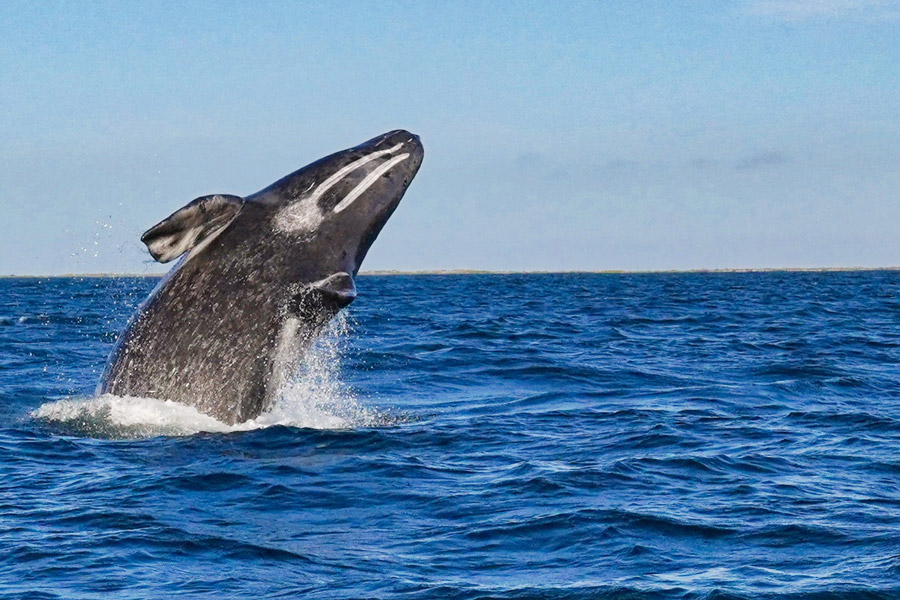
Introduction to Mexico’s Pacific Coast
Mexico’s Pacific Coast is a stunning destination known for its diverse natural beauty and abundant wildlife. Stretching over 1,700 miles from the border with the United States to the border with Guatemala, this coastline is home to numerous popular tourist destinations that draw visitors from around the world. One of the most awe-inspiring aspects of Mexico’s Pacific Coast is the presence of majestic whales that inhabit its waters. Whale watching has become a significant tourist attraction in this region, offering visitors a unique opportunity to witness these magnificent creatures in their natural habitat.
Geographical overview of Mexico’s Pacific Coast
Mexico’s Pacific Coast is characterized by its dramatic landscapes, including towering mountains, lush tropical rainforests, and pristine sandy beaches. The coastline is dotted with charming seaside towns, bustling cities, and picturesque fishing villages. Some of the popular tourist destinations along this coast include Puerto Vallarta, Acapulco, Cabo San Lucas, and Mazatlán. Each of these destinations offers its own unique attractions and activities, attracting tourists seeking relaxation, adventure, or cultural immersion.
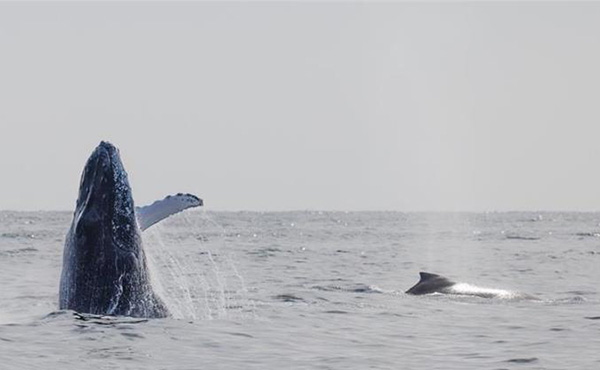
Popular tourist destinations along Mexico’s Pacific Coast
The Pacific Coast of Mexico is home to a variety of tourist destinations that cater to different interests. Puerto Vallarta, located in the state of Jalisco, is renowned for its beautiful beaches, vibrant nightlife, and charming old town. Acapulco, in the state of Guerrero, is famous for its cliff divers, luxurious resorts, and lively entertainment scene. Cabo San Lucas, situated in Baja California Sur, is known for its stunning rock formations, world-class golf courses, and vibrant marine life. Mazatlán, located in the state of Sinaloa, offers visitors a combination of beautiful beaches, historic architecture, and delicious seafood.
Importance of Mexico’s Pacific Coast for whale watching
Mexico’s Pacific Coast is a prime whale watching destination due to its strategic location and diverse marine ecosystem. The warm waters of the Pacific Ocean provide an ideal habitat for different whale species, making this coastline their preferred breeding and feeding grounds. From the months of December to April, the coast becomes a haven for these majestic creatures, attracting enthusiasts and nature lovers from all over the world. Whale watching has not only become a popular tourist activity but has also contributed to the conservation efforts and research aimed at protecting these vulnerable species.
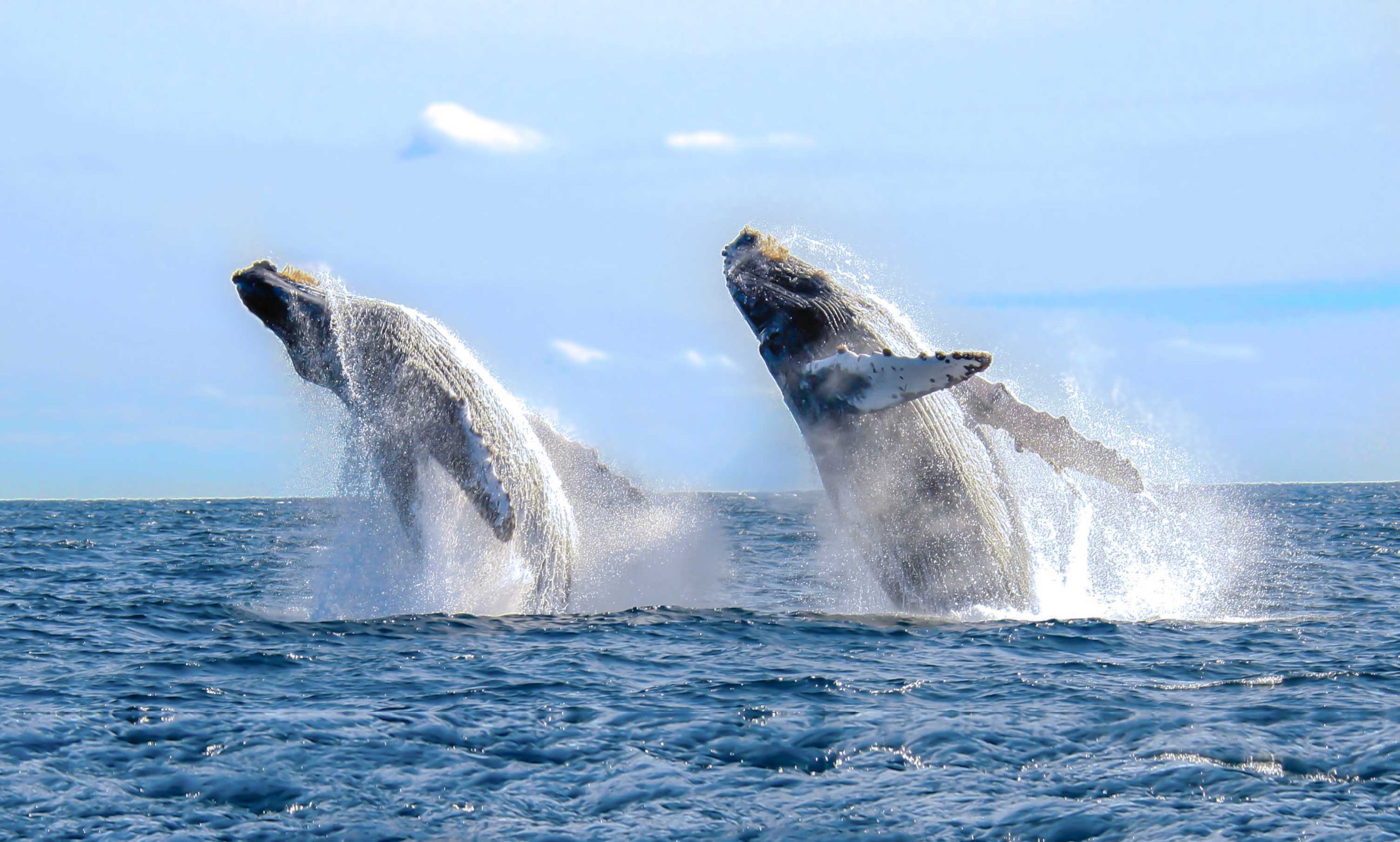
Types of Whales found at Mexico’s Pacific Coast
Mexico’s Pacific Coast is home to a wide range of whale species, each with its own unique characteristics and behaviors. Here are some of the most commonly sighted whales along the coast:
Humpback Whales
Humpback whales are one of the most recognizable and acrobatic whale species. Known for their distinctive knobby heads and long pectoral fins, these whales are often seen breaching, slapping their tails, and singing their beautiful songs. Humpbacks migrate to the warm waters of Mexico’s Pacific Coast during the winter months, and their presence brings joy and excitement to both locals and visitors alike.
Gray Whales
Gray whales undertake one of the longest migrations of any mammal, traveling from the Arctic to the warm waters of Mexico’s Pacific Coast every year. These gentle giants can often be seen breaching, spy-hopping, and even rolling on their backs to show off their mighty flippers. Gray whales are known for their friendly and curious nature, often approaching boats to get a closer look at the humans observing them.
Blue Whales
Blue whales are the largest creatures to have ever lived on Earth, making their presence a truly awe-inspiring sight. These massive marine mammals can reach lengths of up to 100 feet and weigh over 200 tons. Although they are more elusive and less commonly sighted than other whale species, the chance to witness these giants gliding through the water is an experience that should not be missed.
Orcas
Orcas, also known as killer whales, are highly intelligent and social creatures that frequent the coastal waters of Mexico’s Pacific Coast. These apex predators are characterized by their distinctive black and white markings and their incredible hunting skills. Watching a pod of orcas working together to corral and capture their prey is a captivating sight that highlights the power and teamwork of these magnificent creatures.
Other whale species
In addition to humpback whales, gray whales, blue whales, and orcas, Mexico’s Pacific Coast is also home to other whale species, including fin whales, Bryde’s whales, and sperm whales. Each of these species contributes to the biodiversity and ecological balance of the marine ecosystem, further enriching the experience of whale watching along the coast.
Migration Patterns of Whales at Mexico’s Pacific Coast
Whales have fascinating migration patterns that take them on incredible journeys across vast distances. Mexico’s Pacific Coast plays a crucial role in the annual migration of several whale species. Here are some notable migration patterns observed along this coastline:
The annual migration of Humpback Whales
Humpback whales undertake one of the longest migrations of any mammal, traveling from their feeding grounds in the colder waters of the North Pacific to the warm breeding and calving grounds of Mexico’s Pacific Coast. The journey can span thousands of miles, and during the winter months, these gentle giants can be seen frolicking and breeding in the protected waters off the coast.
Gray Whale’s journey from the Arctic to Mexico
Gray whales have one of the most remarkable migration patterns, making a round trip of over 10,000 miles from the Arctic feeding grounds to the warm lagoons of Mexico’s Pacific Coast. Pregnant females travel the longest distance, seeking refuge in the calm and safe waters of the Mexican coast to give birth to their calves. This annual journey is a testament to the resilience and determination of these amazing creatures.
The migration route of Blue Whales
Blue whales undertake an arduous migration from their feeding grounds in the nutrient-rich waters of the North Pacific to the warmer waters of Mexico’s Pacific Coast. Their migration route follows the California Current system, offering an abundance of krill and other small marine organisms that sustain these massive creatures. Witnessing the graceful movements of blue whales as they travel in search of food is a truly unforgettable experience.
Orcas’ presence at Mexico’s Pacific Coast
Orcas are highly mobile creatures that do not follow a strict migration pattern like other whale species. However, they are known to frequent the waters off Mexico’s Pacific Coast, attracted by the diverse marine life and optimal hunting opportunities. Witnessing a pod of orcas hunting or engaging in social behaviors is a thrilling experience that showcases the intelligence and adaptability of these magnificent animals.
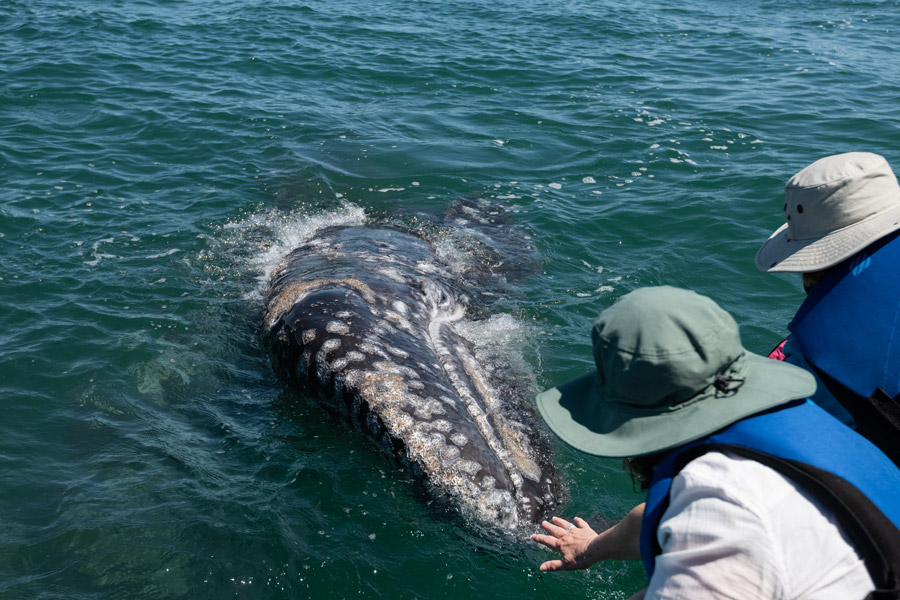
Whale Watching Tours and Experiences
Whale watching tours provide a unique opportunity to observe these majestic creatures up close while respecting their natural habitat. There are several ways to experience whale watching along Mexico’s Pacific Coast:
Guided whale watching tours
Guided whale watching tours are conducted by knowledgeable and experienced guides who are well-versed in the behavior and movements of whales. These tours take visitors on boats specifically designed for whale watching, providing a safe and comfortable platform for witnessing these incredible creatures. Guides share interesting facts and insights about the whales, creating a memorable and educational experience for participants.
Boat tours to observe whales up close
Boat tours offer a more intimate and personalized experience, allowing participants to get closer to the whales and witness their behaviors from a safe distance. These tours often have marine biologists or naturalists on board who provide informative commentary about the whales and their habitat. The thrill of being in the presence of these magnificent creatures and hearing the sounds of their blows and splashes is an unforgettable experience.
Snorkeling and diving with whales
For the more adventurous and experienced individuals, snorkeling and diving excursions allow for a unique interaction with whales in their natural environment. These carefully regulated experiences offer a rare opportunity to swim alongside these gentle giants, marveling at their graceful movements and observing their underwater behaviors. It is important to note that these activities are subject to strict regulations to ensure the safety and well-being of both humans and whales.
Kayaking and paddleboarding near whale habitats
Kayaking and paddleboarding provide a tranquil and eco-friendly way to explore the coastal waters where whales are known to frequent. These activities allow participants to quietly glide through the water, giving them a chance to observe whales from a distance without disturbing their natural behavior. The peacefulness of these activities enhances the sense of connection with nature and creates a truly immersive experience.
Best Time for Whale Watching at Mexico’s Pacific Coast
Whale watching along Mexico’s Pacific Coast is a seasonal activity that takes place during specific times of the year. Understanding the best time to visit is essential to maximize the chances of witnessing these majestic creatures in action. Here are some factors to consider:
Peak whale watching seasons
The peak whale watching season on Mexico’s Pacific Coast varies depending on the species. Generally, it starts in the winter months of December and continues until April. During this time, humpback whales, gray whales, and blue whales can be spotted, as they migrate to the warm waters to breed, give birth, and nurse their young. The exact timing can vary slightly by location, so it is advisable to check with local experts or tour operators for the most up-to-date information.
Factors affecting whale sightings
While the peak whale watching season offers the best chances of sightings, it is important to note that whale behavior is influenced by various factors. Ocean currents, water temperature, availability of food, and weather conditions can all affect the presence and visibility of whales. Understanding these factors can help visitors plan their trips accordingly and increase their chances of witnessing the awe-inspiring spectacles that whales provide.
Optimal weather conditions for whale watching
Clear skies, calm seas, and minimal wind are ideal weather conditions for whale watching. These conditions not only enhance the visibility of the whales but also provide a more comfortable and enjoyable experience for participants. It is advisable to check weather forecasts and plan the trip accordingly to make the most of the whale watching opportunities while enjoying favorable conditions.
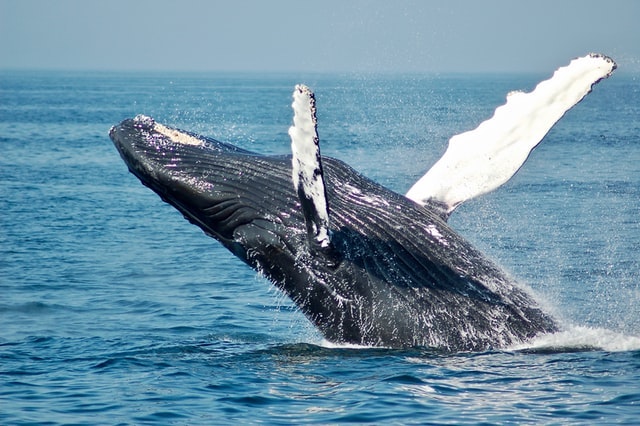
Conservation of Whales at Mexico’s Pacific Coast
Mexico’s Pacific Coast is not only a popular destination for whale watching but also a region actively involved in whale conservation and research efforts. Various measures and initiatives have been implemented to protect these majestic creatures and ensure their long-term survival. Here are some examples of conservation efforts:
Protective measures and regulations
Mexico has implemented strict guidelines and regulations to protect whales from harassment and ensure responsible whale watching practices. These regulations prohibit approaching whales too closely, feeding them, or causing them any harm. Whale watching operators and tourists are required to adhere to these guidelines to safeguard the well-being of the whales and maintain the integrity of the marine ecosystem.
Conservation organizations working towards whale preservation
Numerous conservation organizations are actively working to protect whales along Mexico’s Pacific Coast. These organizations strive to raise awareness about the importance of whale conservation, conduct scientific research, and collaborate with local communities and governments to implement effective conservation strategies. Their efforts contribute to the long-term preservation of these magnificent creatures and their habitats.
Research and monitoring efforts to understand whale behavior
Scientists conduct extensive research and monitoring programs to gain a deeper understanding of whale behavior, migration patterns, and the overall health of the marine ecosystem. This research helps identify key areas for conservation, assess the impact of human activities, and develop strategies to mitigate threats to whale populations. By studying these creatures, researchers can gather valuable insights and educate the public about the importance of protecting these magnificent animals.
Impact of Whale Tourism on Local Economy
Whale tourism along Mexico’s Pacific Coast not only offers visitors a unique and memorable experience but also provides significant economic benefits to the local communities. Here are some ways in which whale tourism contributes to the local economy:
Economic benefits of whale tourism
Whale tourism stimulates the local economy by generating revenue from tourism-related activities, such as whale watching tours, accommodations, restaurants, souvenir shops, and transportation services. The influx of tourists creates employment opportunities for local residents and supports small businesses, contributing to the overall economic growth and development of the region.
Job creation and income generation
Whale tourism creates a wide range of employment opportunities for the local community. From boat captains and tour guides to hotel staff and restaurant workers, the industry relies on a diverse workforce to cater to the needs of visitors. This, in turn, helps improve the standard of living for many individuals and provides them with a sustainable source of income.
Supporting local communities through responsible tourism
Responsible whale tourism promotes sustainable practices that benefit both the local communities and the environment. By supporting local businesses, visitors contribute directly to the economic well-being of the community and help preserve the cultural heritage of the region. Additionally, responsible tourism encourages the protection and conservation of the marine ecosystem, ensuring the long-term viability of the whales and their habitats.
Educational and Scientific Significance of Whales
Whales play a vital role in marine ecosystems and offer invaluable insights into the health of the oceans. The educational and scientific significance of whales extends beyond their awe-inspiring presence. Here are some ways in which these creatures contribute to scientific research and educational initiatives:
Whales as indicators of ocean health
Whales serve as important indicators of the overall health and well-being of the oceans. Their migration patterns, feeding habits, and behaviors provide valuable information about the quality of marine habitats and the availability of prey species. By studying whales, researchers can assess the impact of environmental changes, pollution, and other factors affecting ocean health, ultimately informing conservation efforts and policy decisions.
Contribution to scientific research and understanding marine ecosystems
Whale research plays a crucial role in advancing scientific knowledge and understanding of marine ecosystems. Scientists study whale behavior, communication patterns, and migration routes to unlock mysteries about these remarkable creatures. This research contributes to the broader understanding of marine life, conservation biology, and the interconnectivity of ecosystems, allowing for more informed conservation and management strategies.
Educational programs and initiatives for raising awareness
Whales captivate the imagination of people of all ages, making them powerful ambassadors for marine conservation. Educational programs and initiatives centered around whales provide opportunities to raise awareness about the importance of marine ecosystems, the threats facing whales, and the role that individuals can play in protecting these creatures and their habitats. By engaging the public through educational initiatives, we can foster a sense of responsibility and inspire future generations to become stewards of the oceans.
Cultural Significance of Whales in Mexican Traditions
Whales have held a special place in Mexican culture for centuries, deeply rooted in the traditions and folklore of indigenous communities along the Pacific Coast. Here are some examples of the cultural significance of whales in Mexican traditions:
Historical and cultural importance of whales
Whales have long been revered by indigenous cultures along Mexico’s Pacific Coast. These magnificent creatures are seen as spiritual beings, symbols of wisdom, power, and respect. Mythical tales and legends often depict whales as protectors and guides, embodying the connection between humans and the natural world. The cultural significance of whales is celebrated through rituals, art, and storytelling, keeping these traditions alive for future generations.
Whale symbolism in indigenous cultures
In many indigenous cultures, whales symbolize renewal, rebirth, and the cycles of life. Their annual migrations and the birth of their calves are seen as metaphors for the cyclical nature of existence, emphasizing the importance of harmony and balance in the natural world. Indigenous communities honor whales through ceremonies and rituals that express gratitude for the abundance provided by the ocean and reinforce the interconnectedness of all living beings.
Whale-themed festivals and celebrations
Various coastal communities in Mexico organize whale-themed festivals and celebrations to honor and celebrate the presence of these magnificent creatures. These festivals include cultural performances, art exhibitions, traditional music, and dance, offering visitors a glimpse into the rich cultural heritage of the region. These vibrant celebrations serve as a reminder of the deep connection between humans and whales and the need to protect their fragile existence.
Protecting Whales from Human Activities
While whale watching offers a unique opportunity to admire these creatures, it is crucial to ensure that human activities do not harm or disturb them in any way. Here are some measures to reduce human impact on whales:
Threats to whale populations
Whales face various threats, including habitat degradation, pollution, climate change, entanglement in fishing gear, and collisions with ships. Additionally, irresponsible whale watching practices, such as approaching whales too closely or disturbing their natural behaviors, can cause stress and disrupt their feeding, breeding, and migration patterns. It is essential to minimize these threats and promote responsible whale watching to ensure the well-being of whale populations.
Measures to reduce human impact on whales
To protect whales, regulations and guidelines have been put in place to govern whale watching activities. These measures include maintaining a safe distance from the whales, avoiding sudden movements, limiting the number of boats in their proximity, and refraining from feeding or touching the animals. Compliance with these guidelines is essential to minimize disturbances and create a safe environment for the whales.
Responsible whale watching guidelines
Responsible whale watching guidelines focus on maintaining a minimal impact on the natural behavior of the whales while providing an enjoyable and educational experience for visitors. These guidelines promote sustainable practices, adherence to regulations, and respect for the whales and their environment. By following these guidelines, visitors can contribute to the conservation efforts and ensure the continued well-being of these magnificent creatures.
Unique Whale Behaviors and Interactions
Whales exhibit a range of fascinating behaviors and interactions that contribute to their allure and captivate the imagination of those fortunate enough to witness them. Here are some examples of these unique behaviors:
Breaching and tail-slapping displays
One of the most exhilarating sights is when a whale launches itself out of the water and crashes back with a resounding splash. This behavior, known as breaching, is believed to serve various purposes, such as communication, removing parasites, or simply displaying their strength and energy. Tail slapping is another impressive behavior observed in whales, where they repeatedly lift their massive tails out of the water and forcefully bring them down, creating a loud slap.
Whale songs and communication
Male humpback whales are famous for their mesmerizing songs, which can carry for long distances underwater. These complex and haunting melodies are used as a form of communication, possibly for attracting mates, establishing territory, or maintaining social bonds within a pod. The intricate patterns and unique compositions of these songs are a testament to the intelligence and cultural richness of these remarkable creatures.
Whale socialization and mating behaviors
Whales, particularly humpbacks, engage in a range of social behaviors, including tail-slapping, breaching, and pectoral fin slapping. These interactions play a vital role in establishing hierarchies, attracting mates, and fostering social cohesion within the pod. Breaching, in particular, is often observed during mating season, when males compete for the attention of females by displaying their strength and agility.
Other Marine Wildlife at Mexico’s Pacific Coast
Mexico’s Pacific Coast is home to a diverse array of marine wildlife, offering visitors the opportunity to encounter a wide range of fascinating creatures. Here are some other notable marine species found along this coastline:
Dolphins
Dolphins are some of the most playful and intelligent creatures found in the waters off Mexico’s Pacific Coast. These highly social animals can often be seen riding the bow waves of boats, performing acrobatic displays, and interacting with each other. Encountering a pod of dolphins swimming alongside a boat is a thrilling experience that highlights the beauty and grace of these marine mammals.
Sea turtles
Mexico’s Pacific Coast is an important nesting site for several species of sea turtles, including the olive ridley, loggerhead, and green turtles. Watching these ancient creatures come ashore to lay their eggs and witnessing the hatching of the baby turtles is a magical experience that underscores the importance of protecting their nesting beaches and habitats.
Seals and sea lions
Seals and sea lions can be found along rocky shorelines and remote islands along Mexico’s Pacific Coast. These charismatic creatures are known for their comical antics, agility in the water, and impressive vocalizations. Observing a colony of seals or sea lions basking in the sun or engaging in playful interactions is a delightful sight.
Sharks and other fish species
Mexico’s Pacific Coast is home to a diverse range of fish species, including several species of sharks. Hammerhead sharks, mako sharks, and whale sharks are among the various species that can be encountered while exploring the coastal waters. Snorkeling or diving among vibrant coral reefs also offers the opportunity to observe colorful tropical fish, manta rays, and other fascinating marine species.
Captivating Whale Watching Experiences in Mexico
Whale watching experiences along Mexico’s Pacific Coast have left visitors in awe and filled them with lifelong memories. Here are some personal accounts and testimonials from individuals who have had the privilege of witnessing these majestic creatures up close:
“I will never forget the first time I saw a humpback whale breach right in front of our boat. The sheer power and grace of these creatures is truly awe-inspiring. It was a moment that took my breath away and left me in complete awe of the natural world.”
“As we set out on our whale watching tour, I couldn’t contain my excitement. As we approached a group of gray whales, one of them approached our boat and started spy-hopping. I could see its eye staring right at me, and I felt an instant connection with this gentle giant. It was a truly humbling experience.”
“Snorkeling alongside a family of dolphins was a dream come true. Their playful nature and curiosity captivated me as they swam effortlessly underwater. It felt like I was part of their world for a brief moment, and it left me with a deep appreciation for the beauty and intelligence of these incredible creatures.”
“Watching a pod of orcas hunting was a sight I will never forget. They moved together in perfect synchronization, herding a school of fish and launching themselves out of the water to catch their prey. It was a true display of their power and intelligence. I felt privileged to witness such a raw and untamed spectacle of nature.”
Conclusion
Mexico’s Pacific Coast offers a truly unique and awe-inspiring opportunity to witness the majesty of whales in their natural habitat. The diverse array of whale species, their captivating behaviors, and the stunning beauty of the coastal landscapes create an unforgettable experience for visitors. However, it is crucial to approach whale watching with respect and responsibility, ensuring the conservation of these magnificent creatures for future generations. By continuing to appreciate the magnificence of Mexico’s Pacific Coast whales and actively participating in conservation efforts, we can contribute to their preservation and maintain the integrity of the marine ecosystems they call home. So, get ready to embark on an incredible journey to explore the majestic whales of Mexico’s Pacific Coast and be amazed by the wonders of the natural world.